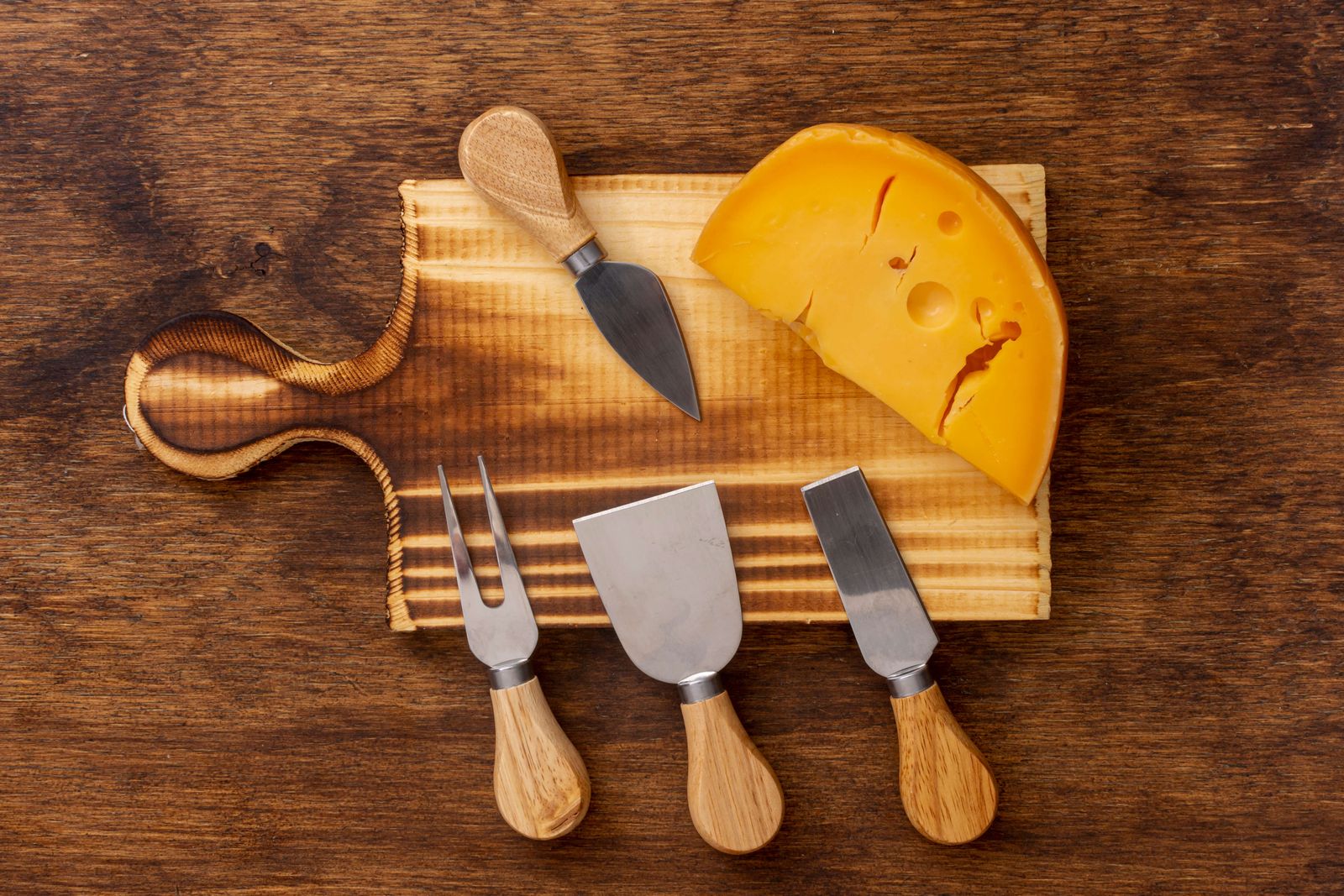Cheese slicers, while seemingly simple tools, play a pivotal role in our kitchens. Ensuring their longevity not only saves money but also guarantees a safe and efficient cheese-slicing experience.
This micro-post delves into the intricacies of cheese slicer maintenance and safety, providing you with actionable tips to keep your slicer in top condition.
In This Article:
- Why Maintenance Matters
- Step-by-Step Maintenance Guide
- Safety Precautions
- Choosing the Right Slicer
- Conclusion
- Frequently Asked Questions
- Further Reading
Why Maintenance Matters
Regular maintenance of your cheese slicer is paramount. A well-maintained slicer ensures consistent and clean cheese slices, reduces the risk of accidents, and prolongs the tool's lifespan. Moreover, neglecting maintenance can lead to rust formation, making the slicer unsafe for food preparation.
Step-by-Step Maintenance Guide
- Cleaning After Every Use: Always clean your cheese slicer after each use. Wash with warm water mixed with mild detergent, and gently scrub using a soft-bristled brush to eliminate any cheese remnants.
- Blade Sharpening: A sharp blade ensures efficient slicing. Sharpen the blade periodically using a sharpening stone or tool.
- Rust Prevention: Dry the slicer thoroughly after washing. Keep it in a moisture-free area to avoid rust formation.
- Regular Inspection: Periodically inspect your slicer for any signs of wear, damage, or rust. Address issues promptly to ensure safety.
Safety Precautions
- Always Use a Firm Grip: Ensure you have a firm grip on the slicer handle to prevent slips.
- Store Safely: Keep the slicer in a drawer with a safety latch or a designated spot away from children's reach.
- Replace Damaged Slicers: If the blade is chipped or the handle is loose, consider replacing the slicer to avoid accidents.
Choosing the Right Slicer
Selecting the right cheese slicer is more than just a matter of preference; it's about ensuring longevity, ease of maintenance, and safety during use. Here are some factors to consider:
- Material: Stainless steel is a top choice for cheese slicers. Not only does it resist rust, but it also offers durability and longevity. Some slicers come with a combination of stainless steel blades and wooden or plastic handles, so it's essential to ensure that all parts are of high quality.
- Ergonomic Design: A slicer with an ergonomic handle design ensures a comfortable and firm grip. This reduces the chances of the slicer slipping from your hand, especially when dealing with harder cheeses. Look for handles with contours or non-slip materials for added safety.
- Adjustable Thickness: Some slicers have adjustable settings that let you select your desired cheese slice thickness.This feature adds versatility to your tool, letting you switch between thin slices for sandwiches and thicker slices for snacking.
- Blade Type: There are different blade designs available, from wire cutters to flat blades. Depending on your cheese preferences, you might opt for one that offers clean cuts without sticking.
- Ease of Cleaning: A slicer that can be easily disassembled or has minimal crevices will be easier to clean, ensuring that no cheese residues are left behind.
- Safety Features: Some slicers come with safety features such as blade guards or locking mechanisms. These features can be especially useful if you have children or if you're storing the slicer in a drawer with other utensils.
By considering these factors, you can select a cheese slicer that not only meets your cheese-slicing needs but also ensures safety and longevity.
Conclusion
A cheese slicer is more than just a kitchen tool; it's an instrument that enhances our culinary experiences, turning a simple block of cheese into delicate slices for our enjoyment.
By prioritizing its maintenance and safety, we not only ensure the longevity of the slicer but also safeguard our kitchen adventures. Remember, the key to a perfect slice isn't just in the technique but also in the care and attention we give to our tools.
So, invest time in maintaining your cheese slicer, and it will undoubtedly serve you well for years to come.
Frequently Asked Questions
How often should I sharpen my cheese slicer blade?
To maintain optimal performance, sharpen the blade once every two months or when you notice reduced efficiency.
Can I wash my cheese slicer in the dishwasher?
While some slicers are dishwasher-safe, hand washing is recommended to prolong the tool's life.
What should I do if my slicer blade is chipped or damaged?
For safety reasons, consider replacing the slicer or the blade if it's detachable.
Further Reading
- Eco-friendly Cheese Slicers: Modern Designs and Innovations: Dive into the world of sustainable cheese slicer designs and discover the latest innovations that prioritize both functionality and the environment.
- Using Cheese Slicers: Tips for Slicing More Than Just Cheese: Explore the versatility of cheese slicers and learn how they can be a multifunctional tool in your kitchen, aiding in more than just cheese slicing.
- To learn how to use cheese knives correctly, head over to TasteofHome and read their article "Your Guide to Using Cheese Knives Properly."
- If you're keen on exploring the best tools for your kitchen, don't miss our comprehensive guide on the best cheese slicer.



